
About Handfasting
Handfasting is a deeply symbolic ceremony that unites couples in a visual representation of their commitment to each other. During this enchanting ritual, partners stand face-to-face while their hands are gently tied together, embodying the literal interpretation of ‘tying the knot.’ This act allows couples to physically demonstrate their bond as they recite vows or personal words of commitment, making the ceremony a memorable and heartfelt part of their wedding day.
Originally rooted in Pagan and Celtic traditions, handfasting has transcended its roots to become a popular element in various types of wedding ceremonies. Its versatility and profound significance have made it an element of choice for couples. It adds historical romance and personal meaning to any wedding ceremony.
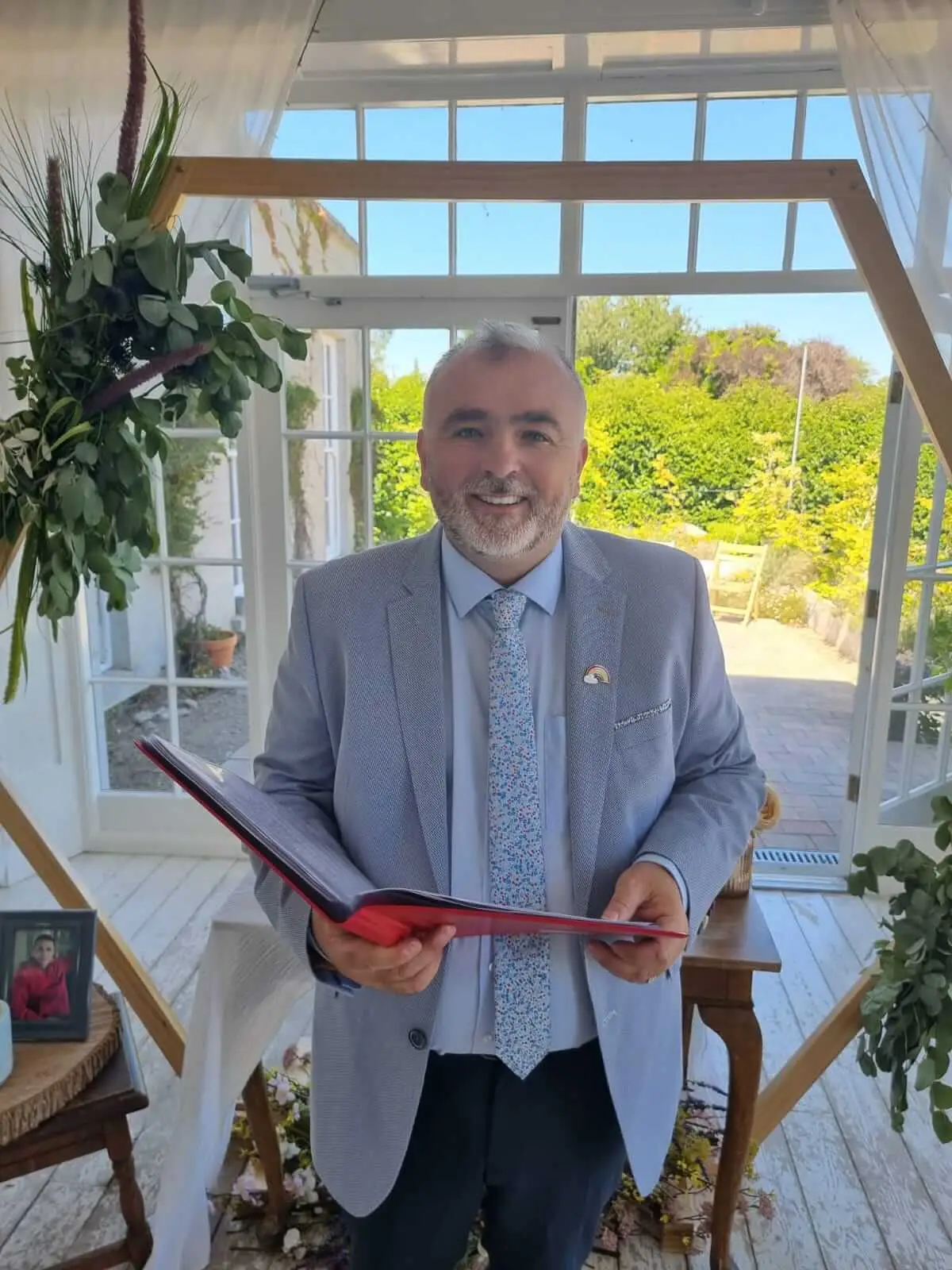
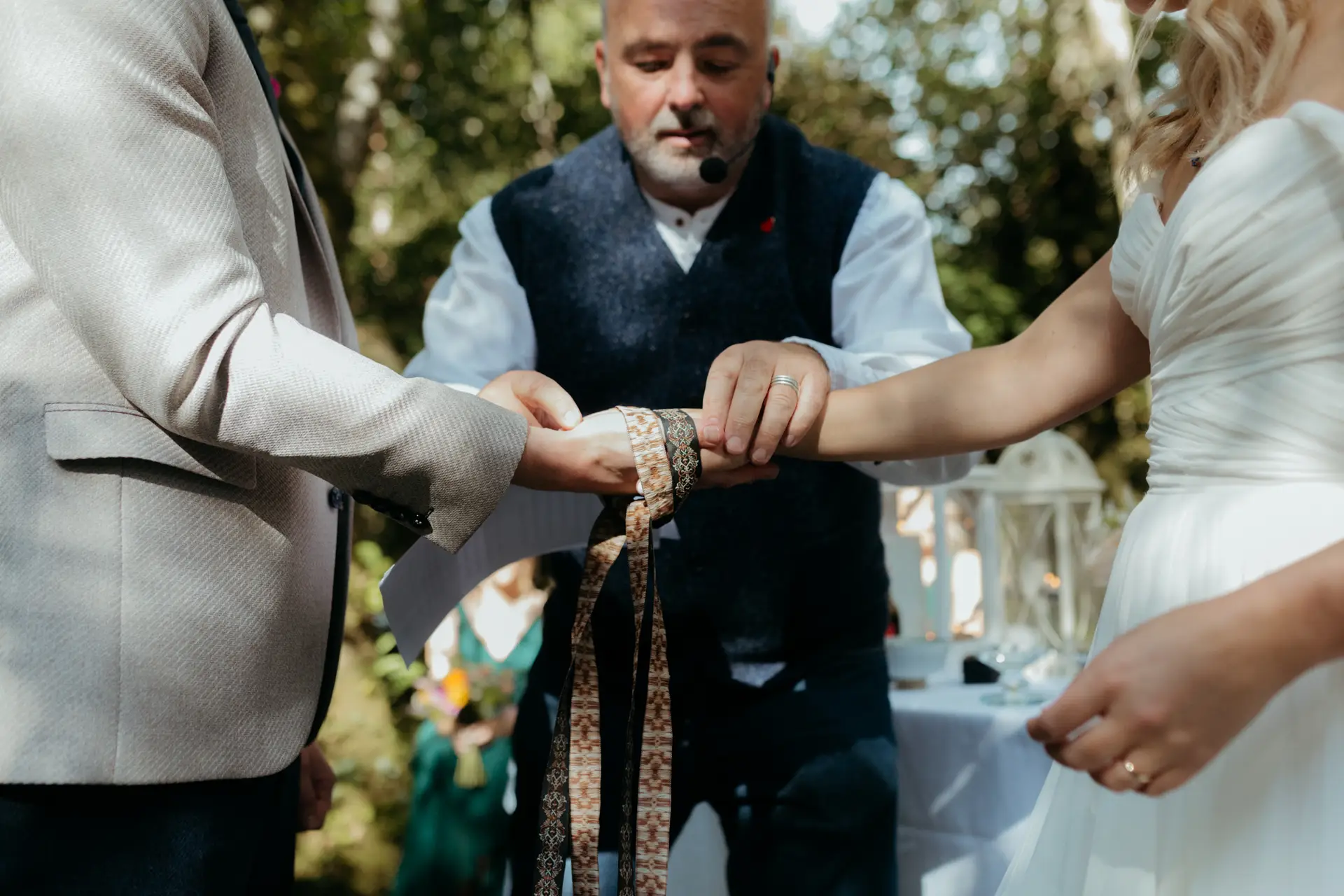
Whether you’re planning a traditional Irish wedding, seeking to incorporate elements of your heritage, or simply wish to celebrate your union in a unique and symbolic way, handfasting offers a beautiful opportunity to do so.
As couples around the world embrace this ancient ritual, it continues to be a testament to the enduring power of love and the unity it brings.
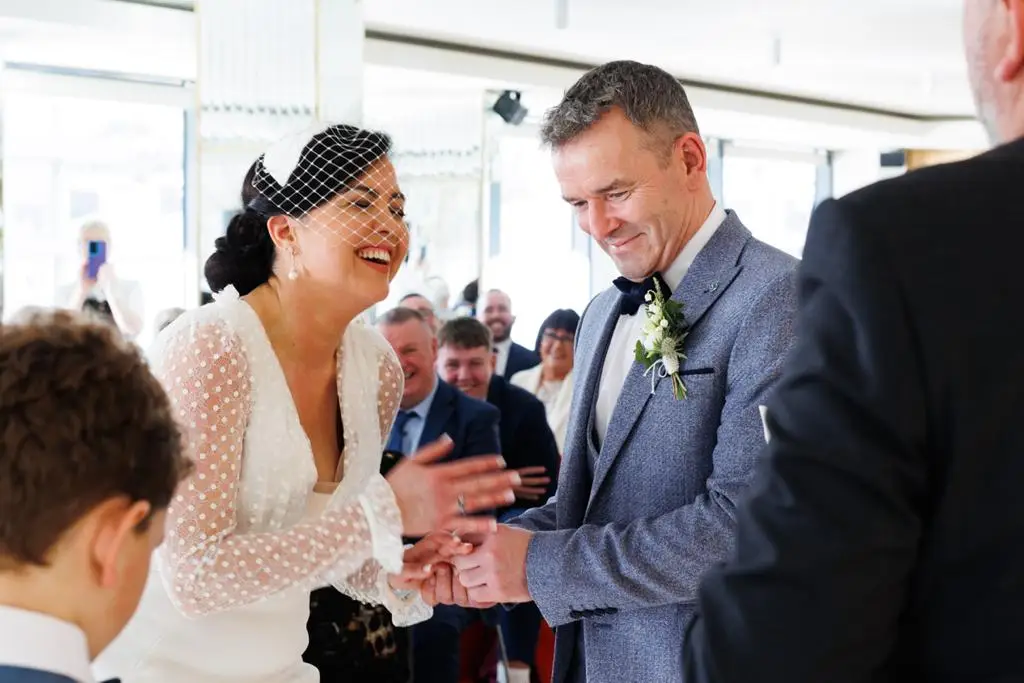
History Of Handfasting
Handfasting, an ancient Celtic tradition that predates recorded history, is a profound symbol of love and commitment, originating as far back as 7000 B.C. in ancient Ireland. This venerable ceremony, often coinciding with significant feast days like Beltane, involved a couple expressing their intent to marry by joining hands. Their hands would be elegantly bound together with a braided chord or ribbon, symbolizing their unity, while a Druid priest formally acknowledged their engagement. This initial commitment was not taken lightly; it was expected to last a full year, during which the couple lived together, a time meant for them to deeply connect and evaluate their compatibility.
Handfasting - A Clear Message to Others
This age-old practice was not only a declaration of love but also served as a clear message to others, marking the woman as engaged and off-limits to other suitors. After a year, the couple could either proceed to marry or, if they found themselves incompatible, dissolve their union freely.

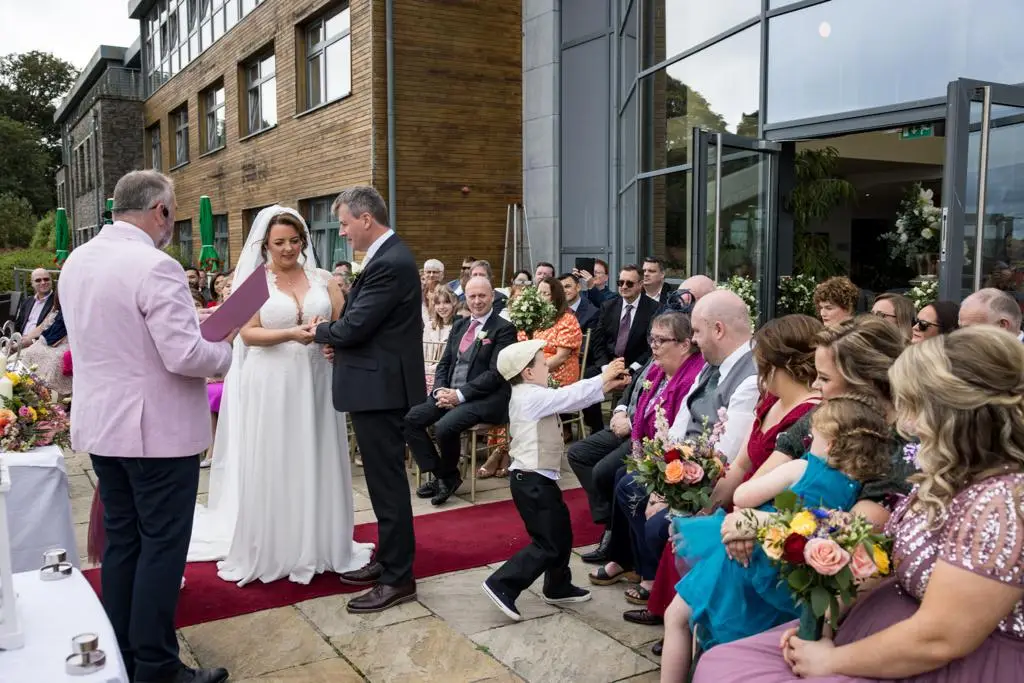
Handfasting - de Facto Wedding
As the Celtic people and their traditions spread across Britain and into Western Europe, so too did handfasting, becoming a cultural hallmark even as Christian marriage ceremonies began to predominate. Interestingly, handfasting intertwined with Christian rituals, particularly in remote areas where formal church ceremonies were less accessible. In such communities, handfasting served as the de facto marriage until a priest could officiate a Christian ceremony. The practice required only mutual consent and a witness to be considered valid, a testament to its simplicity and depth of meaning.
Timeless Appeal of Handfasting
Today, handfasting can be part of a legally binding marriage, a tribute to its enduring significance. Its incorporation into modern weddings, often as part of broader ceremony, underscores the timeless appeal of handfasting as a symbol of union and commitment. This guide illuminates the rich history of handfasting, celebrating its roots in Celtic culture and its lasting legacy in contemporary ceremonies.
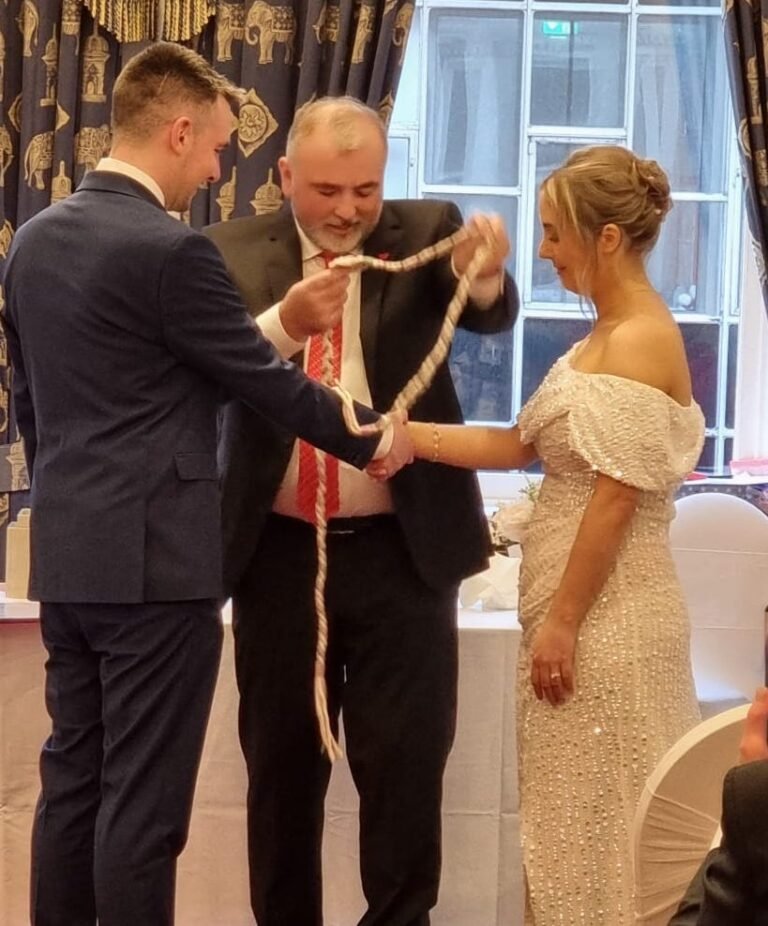
TODAY
In Ireland, marrying couples must adhere to the legal requirements of a civil ceremony but also have the freedom to incorporate a spiritual or personal element that resonates with their beliefs and desires. This flexibility allows for a rich tapestry of marriage ceremonies, from traditional Catholic rituals to ceremonies imbued with Celtic spirituality, or even simple, heartfelt blessing ceremonies. Many couples, especially those drawn to Ireland for their nuptials, find deep inspiration in the country’s rich cultural heritage, particularly in the handfasting ceremony. This ancient Celtic tradition often becomes a central or complementary part of their wedding, whether integrated into a traditional Christian ceremony or standing on its own as the focal point of the celebration.
Tying the Knot!
Handfasting, with its profound symbolism of “tying the knot,” offers a visually stunning and emotionally resonant practice for couples. It’s not just about binding the couple’s hands together; it’s a powerful visual metaphor for their commitment, witnessed by friends and family. This element of the ceremony not only pays homage to Ireland’s historical traditions but also creates a memorable moment that couples cherish. Moreover, with thoughtful planning and creativity, the handfasting cord can become a cherished keepsake, a tangible reminder of the couple’s bond, and potentially a precious heirloom to be passed down through generations.
Handfasting: Bridging the Past and the Present
This blending of legal necessity with personal or spiritual significance in Irish weddings allows couples to create a ceremony that truly reflects their union. Handfasting, as a customizable and deeply meaningful part of this tradition, continues to captivate couples with its beauty and symbolism, making it a beloved choice for those seeking to honor their love in a way that bridges the past and the present.
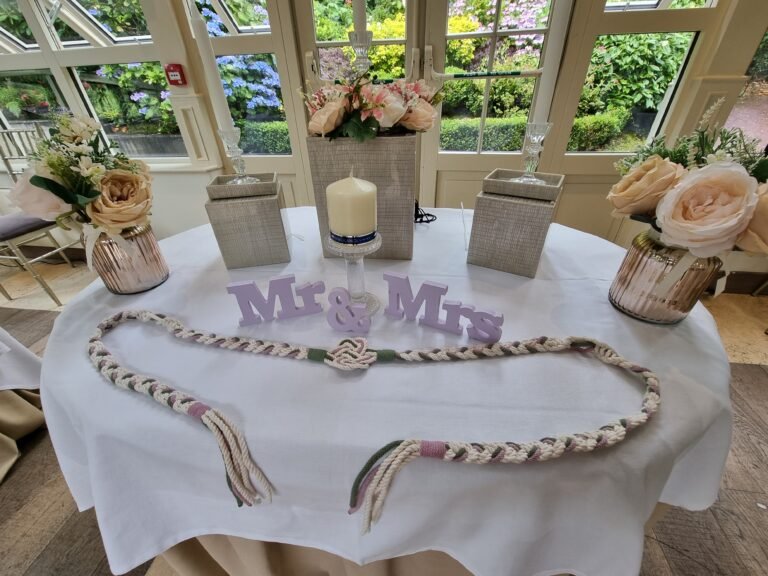
Personalise Your Wedding
Handfasting, a captivating element of Celtic wedding traditions, is symbolized by the binding of the couple’s hands with a special cord or ribbon, known as the “chord.” Historically crafted from rope or cloth, and often dyed or embroidered based on the couple’s resources and skills, this chord is a central feature of the ceremony. In contemporary practice, the choice of materials has expanded significantly, offering couples the freedom to personalise this aspect of their wedding. Modern handfasting chords can be made from luxurious silky ribbons, durable cords of varying thickness, fabric sourced from family heirloom garments, or any material that holds personal significance and can be securely tied around the hands.
How LOng Does Chord need to be?
Typically, the chord measures about a yard/metre to 2 yards/metres in length. This enables it to be gracefully wrapped around the couple’s hands several times, creating a visual representation of a Celtic knot. This intricate pattern is not only aesthetically pleasing but also rich in symbolism, representing unity, eternity, and the interconnectedness of life and love. The flexibility in choosing a handfasting chord allows each couple to infuse their ceremony with unique meaning and personal touches.
Endless Possibilities
For those considering handfasting for their wedding, the possibilities are endless. Whether you opt for a chord that reflects your heritage, incorporates elements from a cherished garment, or simply embodies your personal style, this tradition can be tailored to create a deeply meaningful and visually stunning aspect of your celebration. By embracing the beauty and symbolism of handfasting, you can add a timeless and heartfelt element to your wedding, creating memories that will last a lifetime.
Add Colour to Your Wedding
Incorporating your wedding color theme into your handfasting ceremony can add a personal and cohesive touch to your special day. Choosing plain silk ribbons from a fabric store that match your color scheme is a simple yet effective way to integrate your wedding colors into the handfasting chord.
Involve Family
Engaging your family in the creation of the handfasting chord can add a deeply personal element to the ceremony. For instance, involving your children in selecting and braiding ribbons for the chord can create a cherished family memory and a symbol of unity. Adding charms that hold special significance for you as a couple to the chord can also enhance its personal value and aesthetic appeal. Consider incorporating symbols like golden shamrocks or a lucky horseshoe for a touch of traditional Irish luck on your wedding day.
Add Something Blue?
Incorporating elements of tradition and personal history, such as using an heirloom ribbon as part of your “something old” or adding a blue ribbon for your “something blue,” can add depth and meaning to your handfasting chord. Natural elements collected throughout your relationship, like seashells or beads, can tell the unique story of your journey together.
Involve Your Guests
For a more interactive ceremony, consider inviting your guests to contribute ribbons to your handfasting chord. This gesture can make your loved ones feel like an integral part of your union. Alternatively, embracing the beauty of nature with a handfasting chord made from florals and natural garlands can create a stunning and symbolic representation of your bond.
How Many Ribbons?
The number of ribbons or chords to include in your handfasting is flexible, with some couples choosing to use each ribbon to represent significant aspects of their relationship or family. The number three is often favored for its symbolic meaning in various traditions, representing strength and unity.
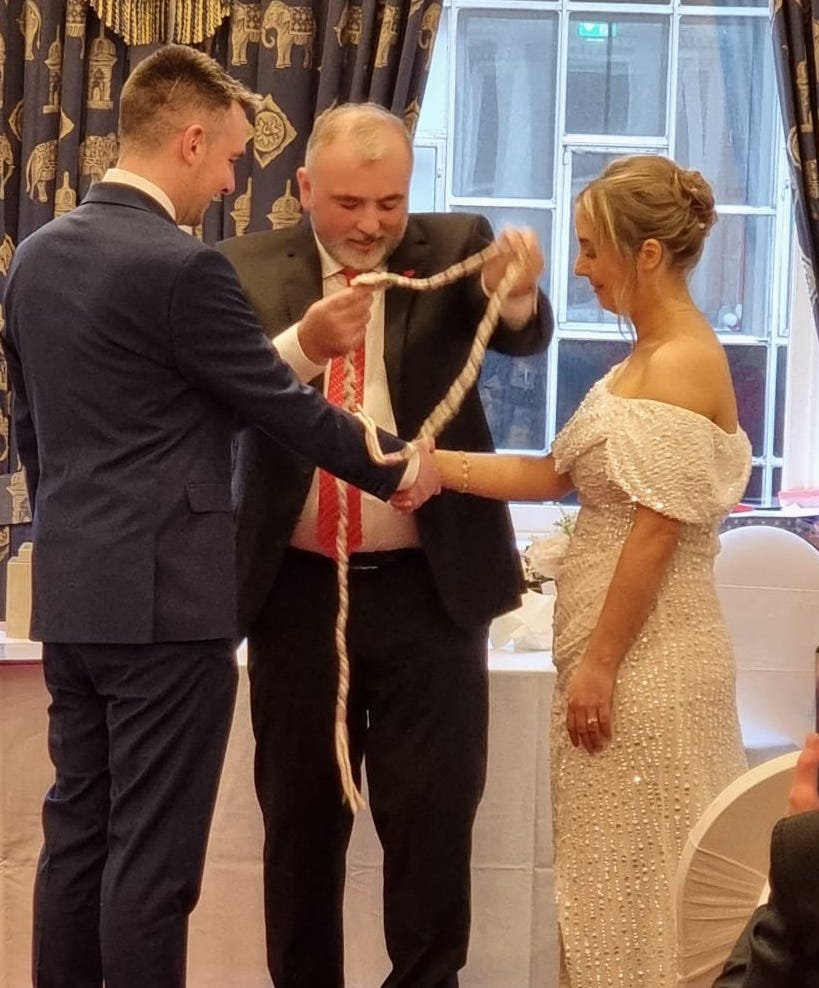

Who Ties the Chord?
Regarding who ties the handfasting chord, while traditionally done by the celebrant, you may choose anyone special to you, such as family members or children, to perform this meaningful task. This choice can personalize your ceremony further, making it truly your own.

Symbolise Your Love for Each other
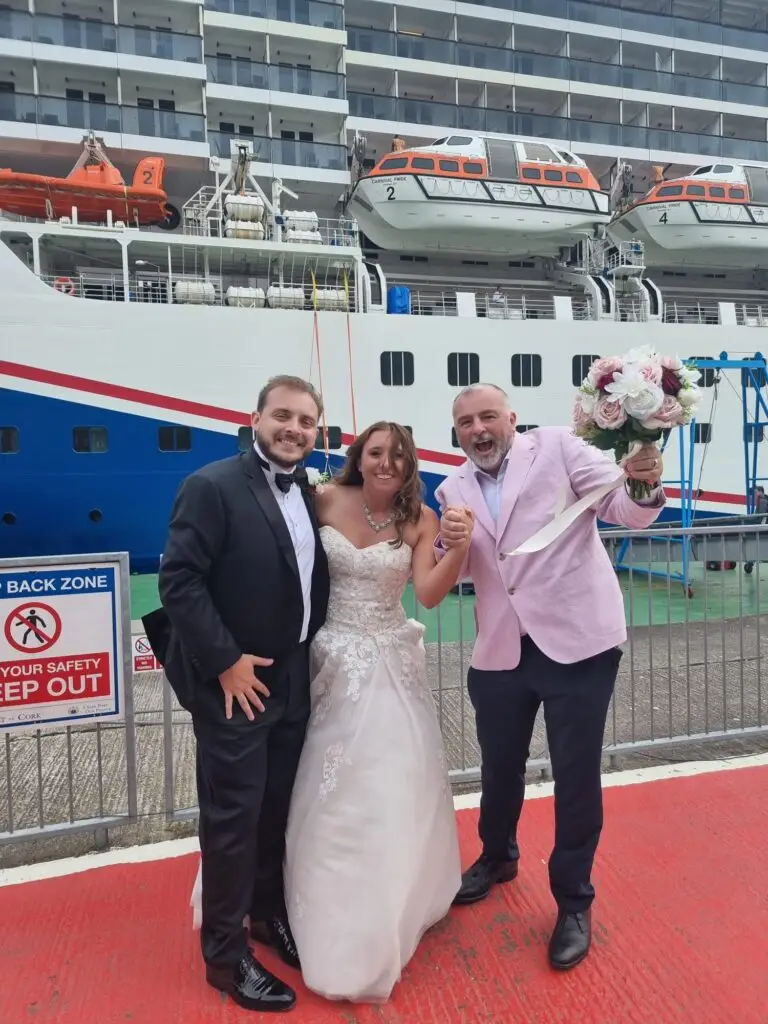
Handfasting offers a beautiful way to symbolise your commitment to one another, blending tradition, personal significance, and the natural world into a ceremony that reflects your unique love story.
